German Torpedo Destroyer T-189
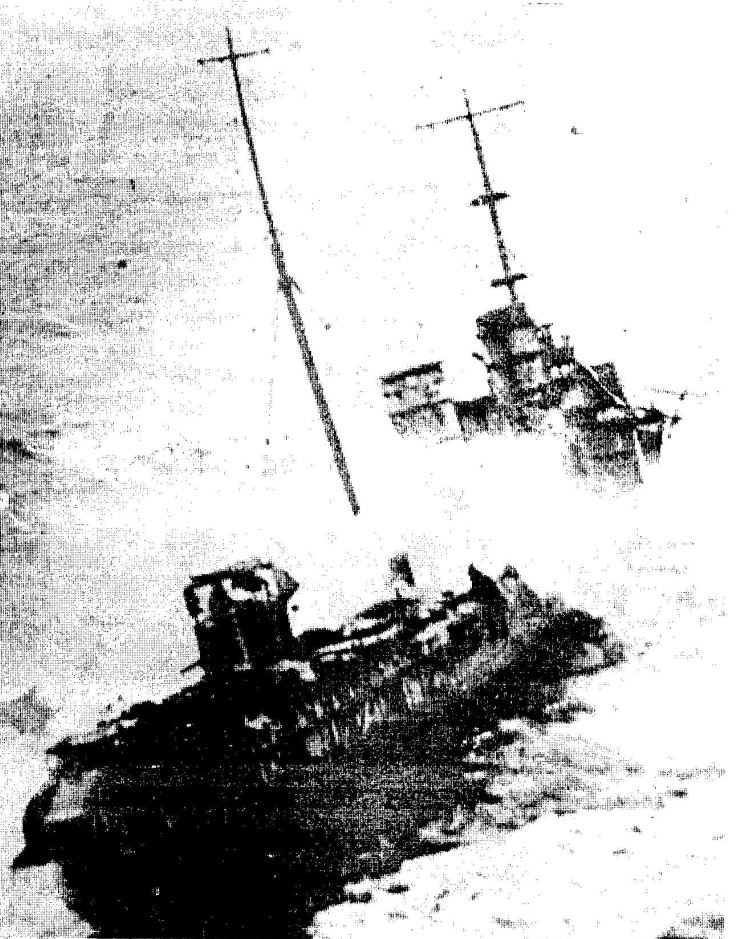
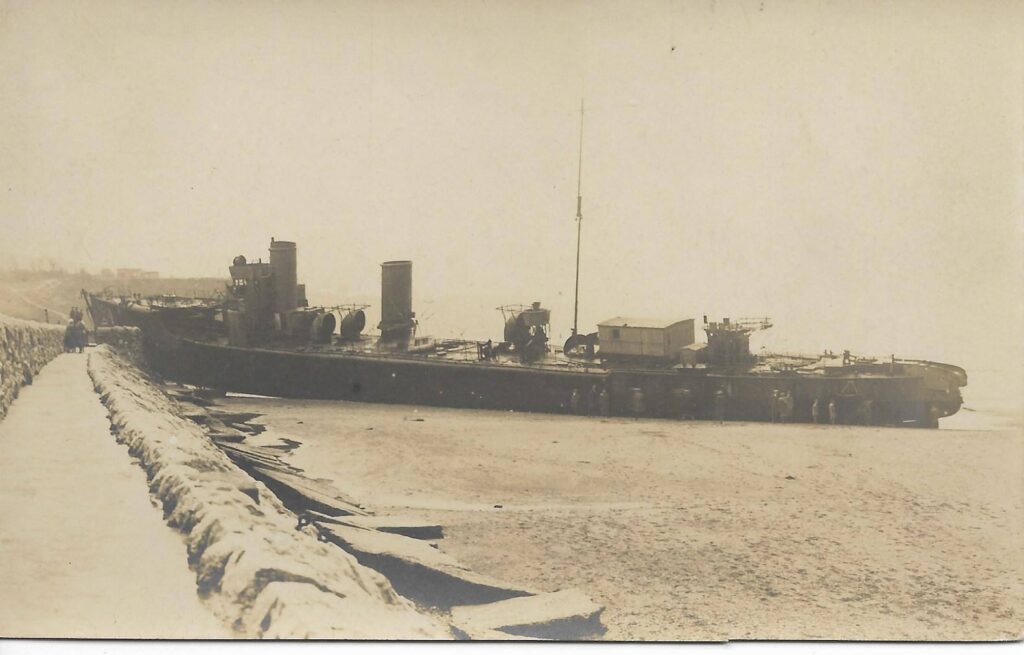
Builder Vulcan A.G.(Stetting & Hamburg) of Hamburg
Tonnage 660 T
Dimensions 72 x 7.8 x 3 m
Engine Triple expansion dual shaft
Power 14000 hp
Speed 33 kts
Armament 2 x 8.8 mm guns
Owned by the Imperial German Navy from 1911 to 1920 and was renamed from V-189 to T-189 in 1918
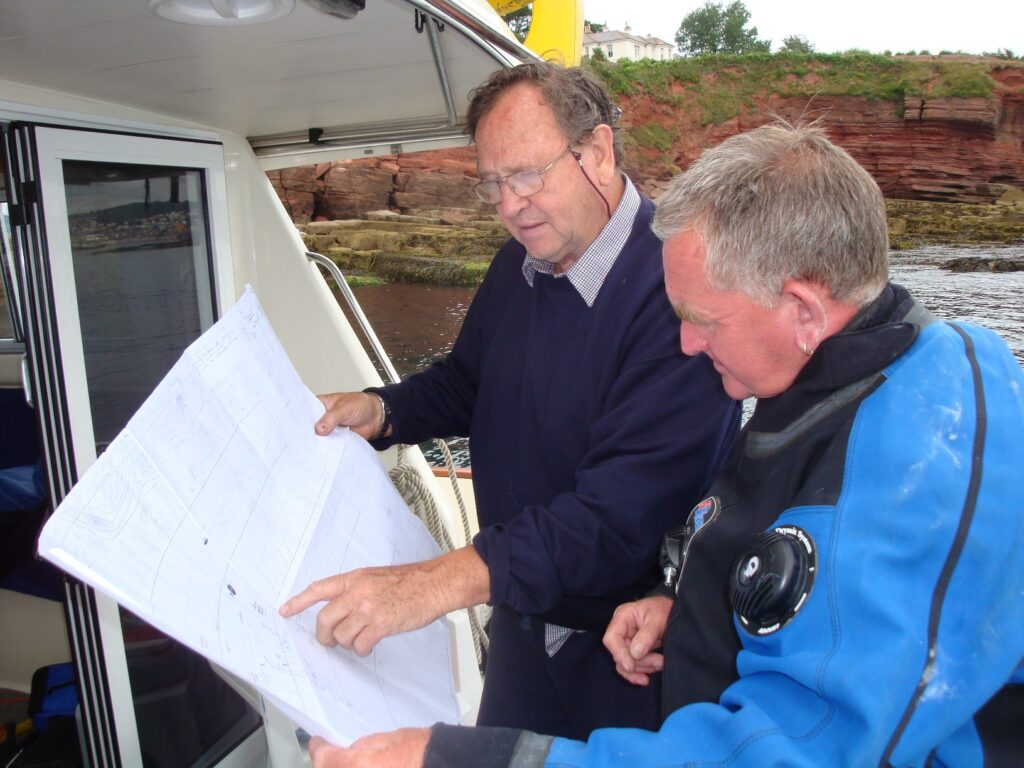
On 28 April 1920, two German Torpedo Boat Destroyers were surrendered to the allied forces. Both had been involved in the famous battle of Jutland.
On the 12th December 1920 the T189 and S24 were both being towed from Cherbourg, destined for the scrapyard at Teignmouth in East Devon. In a strong easterly wind both ships broke loose from their tugs and were blown onto the east Devon shores, one on Roundhand head and the other on Goddrington sands. There was always confusion as to which one was which until diver Stephen George recovered an identifying porthole off Roundham Head. The T-189 was built as the V-189.
The first person to attempt some salvage was E.Bradshow who was a well known Paignton fisherman who often rowed to Dartmouth to deploy his crab pots. He and a few friends strapped brass items to their dingy and towed the back to Paignton. In the 1920 a diver called Lister from Brixham was also involved in the salvage and at this stage the ship was still showing above water. 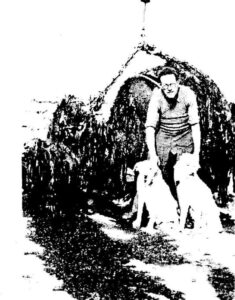 Not much happened then until the early 50’s when James (Jimmy) Thorpe from Brixham decided to salvage the wreck. He bought himself a German submarine “Escape Apparatus” and with a thick woollen jumper set to diving the wreck and attaching chains. He eventually bought a Siebe Gorman diving suit, helmet and air pump and set to recovering all the three turbines. During this salvage he also recovered two brass cannons from the adjacent wreck of HMS Venerable or HMS Savage which sank in 1904 and 1762 respectively. On one quite night he used explosives on the wreck and set them too shallow. The result was that many residents of Paignton were awakened and windows were broken. The police sergeant who got involved referred to him as “Gelignite Jim”. When he was finished, he sold the diving equipment to a man in Henley on Thames for £30.
Not much happened then until the early 50’s when James (Jimmy) Thorpe from Brixham decided to salvage the wreck. He bought himself a German submarine “Escape Apparatus” and with a thick woollen jumper set to diving the wreck and attaching chains. He eventually bought a Siebe Gorman diving suit, helmet and air pump and set to recovering all the three turbines. During this salvage he also recovered two brass cannons from the adjacent wreck of HMS Venerable or HMS Savage which sank in 1904 and 1762 respectively. On one quite night he used explosives on the wreck and set them too shallow. The result was that many residents of Paignton were awakened and windows were broken. The police sergeant who got involved referred to him as “Gelignite Jim”. When he was finished, he sold the diving equipment to a man in Henley on Thames for £30.
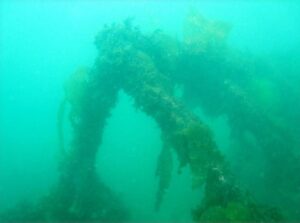 Today the is not much showing of the wreck of T-189 as most of what is left is under the sand. A small section of the superstructure stands 2m off the seabed and a section of the stern is in Savage cove to the north
Today the is not much showing of the wreck of T-189 as most of what is left is under the sand. A small section of the superstructure stands 2m off the seabed and a section of the stern is in Savage cove to the north